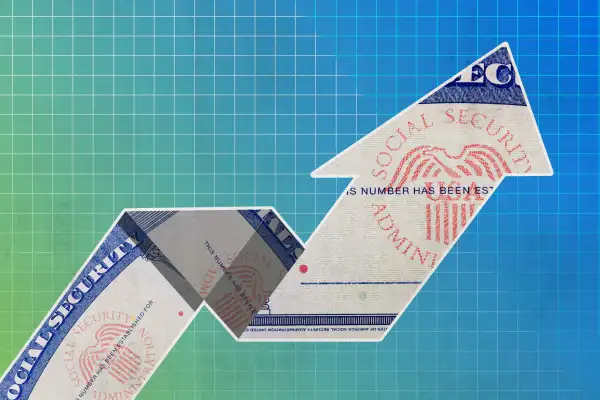Social Security Recipients Could Get Their Biggest Raise Since 1981

The final estimates for the 2023 Social Security cost-of-living adjustment, or COLA, are rolling in — and it looks like great news for the millions of Americans who rely on those benefits from the agency.
Monthly payments from the federal Social Security Administration could jump by 8.7% in 2023, according to a new projection released Tuesday by the Senior Citizens League, a nonprofit advocacy group. The Social Security Administration won't announce the official COLA until October.
“A COLA of 8.7% is extremely rare and would be the highest ever received by most Social Security beneficiaries alive today,” said Mary Johnson, a Social Security policy analyst for the Senior Citizens League, in a news release.
For comparison, the COLA this year is 5.9%.
More than 70 million Americans receive monthly checks from the Social Security Administration, according to the latest data from the agency. The lion's share of them — some 52 million — receive retirement benefits, but the agency also assists disabled workers, spouses and children of deceased workers.
All of those beneficiaries stand to gain from the upcoming COLA that’s been fueled by inflation, which has reached historically high levels in recent months due to rapidly rising costs of just about everything (but especially gas, food, housing and vehicles).
For example, with an 8.7% COLA, the average monthly payment for retirees would increase by approximately $144, going from $1,656 to $1,800, according to Johnson.
How inflation affects COLA
When inflation goes up, so does the Social Security COLA — eventually.
“COLAs are intended to help maintain the buying power of Social Security benefits when prices rise,” Johnson said in the release. “Without a COLA that adequately keeps pace with inflation, Social Security benefits purchase less and less over time, and that can create hardships especially as older Americans live longer lives in retirement.”
While boosted monthly checks will provide some welcome reprieve from sky-high prices for millions of beneficiaries, the official COLA won’t go into effect until January 2023. In the meantime, beneficiaries are having to make do with monthly payments that have been getting pummeled by rising inflation. Over the long term, this lag before inflation-adjusted payments kick in results in a massive decrease in buying power for Social Security recipients.
Still, an estimated 8.7% raise would be significant, marking the largest COLA increase since 1981.
To make its predictions, the Senior Citizens League uses the latest inflation data from the Labor Department, mirroring the official methods from the Social Security Administration.
The Department said Tuesday that the inflation rate for the 12 months ending in August was 8.3%. This rate is known as the “headline inflation rate” and applies to most consumers. However, when determining Social Security COLAs, officials use a slightly different metric in an effort to better account for how rising costs affect beneficiaries. This specialized inflation rate is known as CPI-W, and it tracks prices for wage earners and clerical workers. The CPI-W for August was 8.7%.
Each month, Johnson uses the latest CPI-W figures from the Labor Department to update her projections. Recent projections from Johnson and other industry experts pegged the 2023 COLA between 8.9% and 10.8%.
Johnson’s new COLA estimate is based on the most up-to-date inflation data available; because of this, it is expected to be more accurate than the previous projections.
To summarize: The Social Security Administration uses inflation data from July, August and September to calculate the official COLA. We now have two of those three months.
The Social Security Administration is expected to announce the 2023 COLA on Oct. 13.
More from Money:
3 Best Money Moves for September 2022
The Date Social Security Will Run Out of Money Just Changed
1.6 Million Taxpayers Are Getting Surprise Refunds From the IRS
